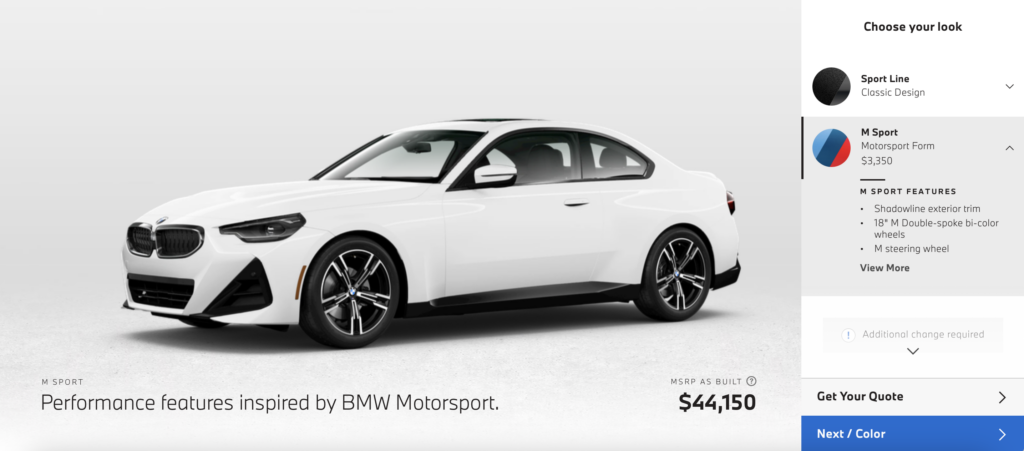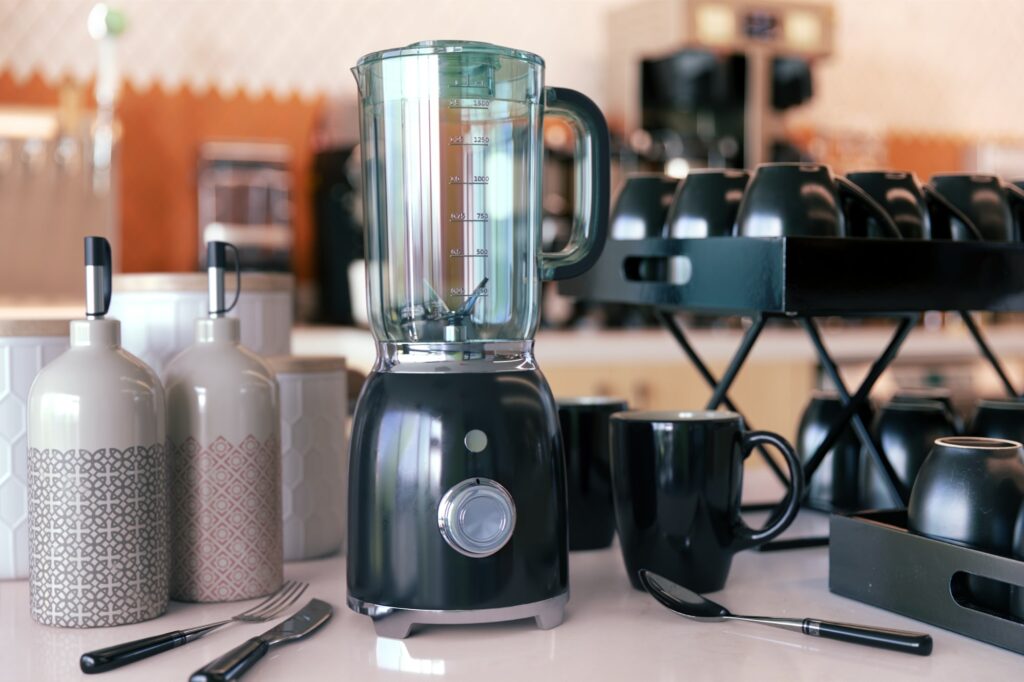12 September
What ROI Will You Have With a 3D Configurator of Your Product?
3D
Business
Design
min. read

Something that retailers and customers are most concerned about is now possible thanks to the most cost-effective solution on the market. Who wouldn’t want to be able to personalize a product online before buying it? What vendor doesn’t want their product to be presented in the best available way?
3D configurators are absolutely trending. More and more major eCommerce platforms and smaller brands are choosing them to boost their sales. If you’re already wondering if configurators are a good fit for your business – the first indicator is whether your product gallery consists of multiple items and whether some or each of them has at least 3 features that are variable. You will dispel further considerations by reading on!
What is the real value of such an investment and what are the benefits? Let’s take a closer look at the numbers and use cases.
Why 2D product images are no longer attractive?
Product representations in the form of 2D images can’t capture all important and sometimes crucial product details (on which very often viewers want to focus their attention). Such images provide only limited sights, which often don’t convey the full functionality of the product. Then, unfortunately, the customer has to “take your word for it” in the product description. The idea of the real form of the object of sale, may miss te reality to a significant degree, which unfortunately leads to returns.
Limited possible interactions with the product presentation result in loss of interest and distraction to alternatives. Customers not having an opportunity to rotate, zoom and personalize products as 3D models also get bored quickly. It’s key to understand that the fight for clients is now taking place in the era of interactive experiences that engage customers, so 2D materials are becoming less profitable and 3D product configurator is the answer to increasing ROI. Despite the need to invest, not only the costs are payback, but also the costs of revenue increases and new possibilities are coming.
With the showcase of product in 2D, customers are missing out the real shopping experience that should be developed with such common online sales. Audience expectations are growing every year, and with technology as available as it’s today, and investment in real time 3D configurators is an investment that can’t help but pay off. The data says it’s true and we will give you the reasons for this.
Product configurator in a nutshell
The 3D configurator is, in the simplest terms, an interactive interface in web browsers that allows perfect visualization of a product and adjusting it along multiple options. This technology uses a 3D model of the item with which the client can interact in real time. Changing colors, materials, texture or adding different accessories are just some of the interesting features of personalization.
Individual customer needs, therefore, dictate the demand for opportunities to take an active role in modifying product features. The ability to quickly and accurately value complex products (such as furniture, cars, bikes, etc.) is also proving crucial in exploring a positive customer experience in the case of product configurators. Manufacturers focusing on such usability are thus responding to the demands of today’s world, where mass production and presentation of identical products are no longer desirable.
One of the first branches that used 3D configurators for sales purposes was automotive companies. Audi, BMW and Ford became among the first users and now, all major car brands have their own configurators allowing customers to adapt and visualize the specifications of their cars prior to purchase. It includes options for colors, interiors, accessories and many other details or feature extensions. The solution significantly improves the customer’s buying experience, decision-making process and brings awareness that such a tool is user friendly.

In the topic of automotive, you can watch this video of our real time car configurator demo created for Mercedes.
If you’re wondering if the concept of configuration would fit your business, below we’ve dissected a list of use cases that illuminate the topic more in practice.
Use cases
- 3D product visualization
Viewing product variations from every possible angle is a valuable feature in almost every business. The most popular eCommerce uses involve rotating 360° video and interactive 3D product pictures that can be rotated, zoomed, and explored in any way.
- Virtual photography
Virtual photography is the entirely digital creation of photorealistic images. It’s not always presented in three dimensions, but this technology is possible thanks to 3D rendering, which includes adjusting lighting, changing composition and even the weather to achieve a perfect image.

Virtual photography is used in real estate field to create 3D tours of properties. Other branches where such technology is popular are: video games, eCommerce, interior design, events planning, film & animation, architecture, tourism, advertising and even education.
- Product customization
This is strictly something that we mentioned at the start. 3D models as representations of items let customers create their product variants by modifying textures, adjusting accessories, changing sizes/colors, and other elements. In Prographers, we implement such solutions daily – you can check our 3D projects.
Product pages with an interactive configurators are highly beneficial. Thanks to them, clients can experience the shopping process as if they were almost in store.
- AR (augmented reality) placement
Absolutely not the last, but really worth mentioning is the AR placement of the product. It’s based on recreating aspects of the physical shopping even more than product configurators, because this technology provides the possibility to virtually place products in your environment (for example in the house) using your mobile phone with a camera or webcam. Nothing could be more reliable than that.
Besides branches mentioned before in the case of virtual photography, AR placement can be used in branches such as: art – museums allow visitors to interact with exhibits in an immersive way via AR; marketing – placing products in AR-based advertising and many more.
What ROI will bring a 3D configurator for your business?
And so we got to the data. There are several points in particular worth discussing. 3D product configurators means not only higher conversion rates, but ensures fewer returns and gain more positive recommendations. Let’s take a closer look at some numbers.
In 2020, the American eCommerce area faced a $550 billion loss due to product returns. Almost 40% (39,8%) of these returns were due to inconsistencies between the product’s portrayal and its real features. Taking into account other factors, we can mention also buyer’s remorse (37,2%) and defective products (5%), but this is clear that the biggest group of returners are those connected to mentioned ambiguities of descriptions.
A 3D product configurator significantly mitigates this issue by providing a precise visual representation of the product, thereby reducing the likelihood of unexpected surprises when delivered. So improving the customer’s purchasing experience is key to retaining them and this is possible with 3D customization. Interestingly, around 20% of customers are eager to pay more for personalized items. However, sales teams often face a tiresome process of interacting with clients through various channels to finalize a purchase depending on their selections. Such a contact can be prone to errors and can lead to dissatisfaction with the final product, also consequently increasing returns.
A 3D product configurator can streamline the selling process by guiding through the entire buying journey without the need for sales staff help. Visualizing choices boost an attractiveness of your business. So here we have a lot of benefits – reduced returns, improved customer engagement, at least 2x higher conversions and faster selling.
How does it work from the technical site?
The case is, both the customer and the vendor don’t have to worry about anything when it comes to the correct functioning of the configurator. The user only needs a device with Internet access.
With configurators created by us, your platform will work smoothly and without any delays. A common problem of such functionality on sites is slower loading time than for 2D images and the key thing is to be aware that such a factor on a website strongly affects conversion rate. All our configurators ensure speed loading and efficiency. Additionally, our own multiple scene lighting pipeline ensures that all 3D models are properly lit on every platform (including mobile, which is crucial in eCommerce these days).
Conclusion
Summing up, such a solution like product configurator not only ensures that you attract the attention of clients who are absolutely tired of browsing and comparing in the flood of traditional methods of presenting products in 2D, but also leads to more effective sales, and in the end, that’s what it’s all about, right?
Increased trust from clients is priceless and comes from better marketing solutions, so if you’re willing to change your visual merchandising system, don’t hesitate and contact us today. We will be happy to provide a new level for your platform and help your business grow.
For more informations, go to our contact section with 3D services subpage.
Let's talk
I agree that my data in this form will be sent to [email protected] and will be read by human beings. We will answer you as soon as possible. If you sent this form by mistake or want to remove your data, you can let us know by sending an email to [email protected]. We will never send you any spam or share your data with third parties.
I agree that my data in this form will be sent to [email protected] and will be read by human beings. We will answer you as soon as possible. If you sent this form by mistake or want to remove your data, you can let us know by sending an email to [email protected]. We will never send you any spam or share your data with third parties.